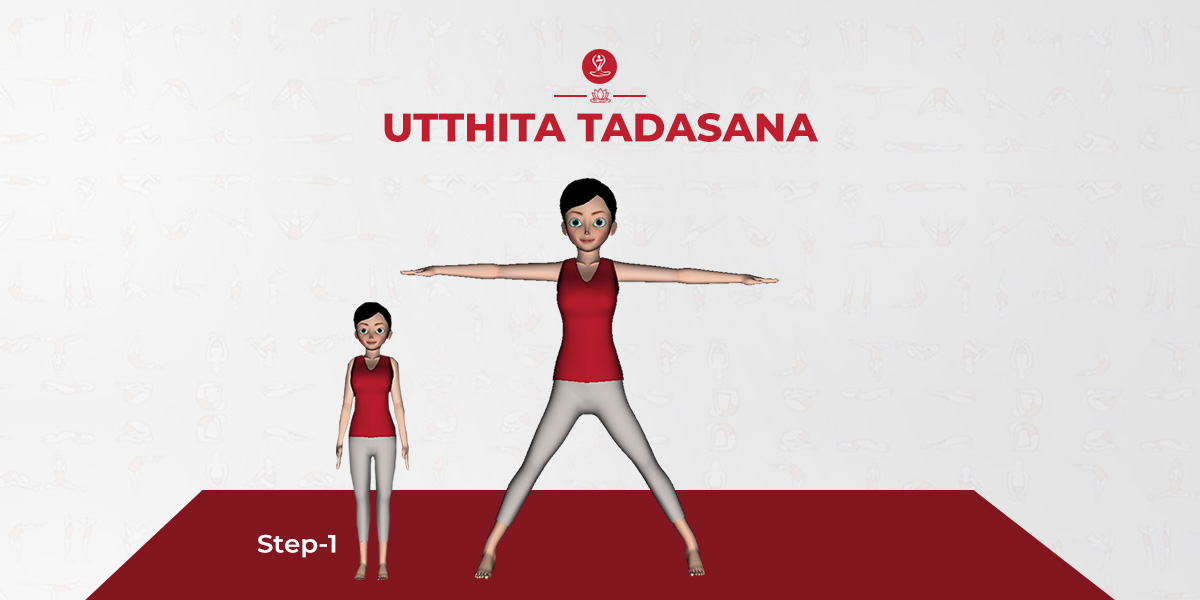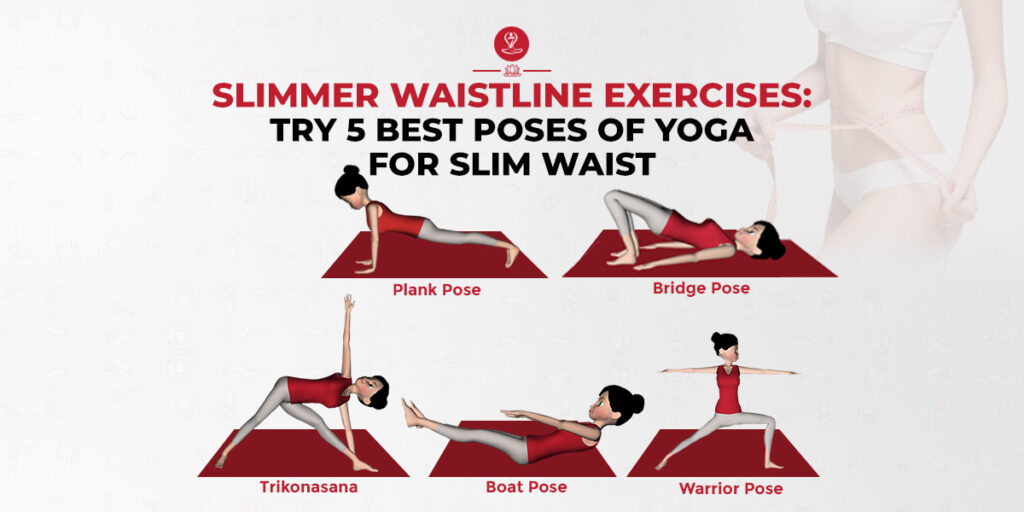One of the easiest Yoga poses, Utthita Tadasana (Five Pointed Star Pose) is a simple standing pose, a variation of Tadasana or Mountain Pose. It is an active pose and is also considered a transition pose for the various standing poses (such as Goddess Pose, Warrior II Pose, Triangle Pose, etc.), commonly seen in Iyengar Yoga.
Utthita Tadasana is primarily considered a starting or basic pose. This asana is designed for easy or beginner-level yogis to do. This asana can be incorporated into flow yoga sequences.
Utthita Tadasana Basics
| Sanskrit Pronunciation | Utthita Tadasana |
| Meaning | ‘utthita’ means ‘stretched’ ‘tada‘ means ‘mountain’ ‘asana’ means postur |
| Pose Type | Easiest poses |
| Pose Level | Beginner pose |
| Style of yoga | Iyengar Yoga |
| Other Names | Five-pointed Star pose |
| Stretches | The entire body |
| Strengthening | Feet, ankles, legs, sacrum, abdomen, shoulders, and back |
| Duration | 30 second to 3 minutes |
Meaning
Utthita Tadasana is a Sanskrit word. This word is mainly made up of three words. The first word ‘Utthita’ means ‘extended’, the second word ‘tada’ means ‘mountain’, while the third word ‘asana’ means posture, position, or posture of sitting, lying, or standing in a particular position. ) is from.
In English it is named as Five Pointed Star Pose, this is because in Utthita Tadasana the shape of the body is compared to the five-point of a star. The arms, legs, and head are compared to the sides of the star and hence the name Five Pointed Star Pose.
This yoga pose is a basic standing pose that energizes, lengthens, and opens the entire body and makes the body feel powerful by invigorating and energizing.
The practice of this mudra begins with the arms and legs extended to the sides, then the legs are extended. Keeping the palms down, the arms extended parallel to the ground, open stance invites happiness and joy in life.
Practice Guide For Utthita Tadasana (Five-Pointed Star Pose)
The Practice Guide to Perform Utthita Tadasana serves as a valuable resource for yoga enthusiasts seeking to advance their practice, offering a structured and detailed approach to mastering this asana.
It is a widely interesting pose for great beginners so even an advanced practitioner can get a lot out of it.
Follow the below practice guide to perform Five-Pointed Star Pose .
Preparatory Poses
- Mountain Pose (Tadasana)
- Warrior II (Virabhadrasana II)
Step-by-step instructions to perform
- Begin standing in Utthita Tadasana’s Mountain Pose (Tadasana).
- Spread both your legs 3-4 feet wide and rest firmly on the ground. Spread the body weight on all the corners of your feet.
- The feet should be under the wrists, facing forward and parallel, with the palms facing up, down or forward.
- Spread your fingers as if you want to touch an object or a wall.
- Press shoulder blades back slightly, pull knee caps up and squeeze thighs, tuck tailbones, and feet feel strong and solid as they are rooted into the floor.
- Relax the shoulders back and open the chest in front.
- Take a deep breath and extend the crown of your head towards the sky. Look straight ahead keeping the chin parallel to the floor.
- Stay this final position and gradually increase the time with your practice.
Follow up poses
- Warrior II (Virabhadrasana II)
- Triangle Pose (Trikonasana)
- Goddess Pose (Utkata Konasana)
- Standing Wide Angles Forward Bend (Prasarita Padottanasana)
Benefits of Five-Pointed Star Pose
- Stretches and strengthens your balls and feet, knees and ankles.
- It engages all the muscles and joints to stretch the hips, groin, hamstrings and calves, and the shoulders, chest, and spine.
- Doing this asana not only increases stamina but also helps in correcting your posture by re-aligning the spine.
- The asana encourages one to attain happiness, love and happiness by opening their chest.
- This asana helps you connect with your consciousness and increases mental awareness. With its practice, you will feel more alert, calm and creative.
- In this, you have to balance the body by standing on the sides of your feet. Flexibility also increases with its practice.
- It can help you to increase the length.
Precaution
- Do not overextend your arms or any body part.
- Remain in the arms position for as long as you are comfortable.
Conclusion
The practice of Utthita Tadasana begins in Tadasana, with the legs extended parallel to the arms. The palms are extended to the sides parallel to the ground.
It is a variation of Mountain Pose known as Star Pose or Five-Pointed Star Pose, as you are raising yourself in all 5 directions.


